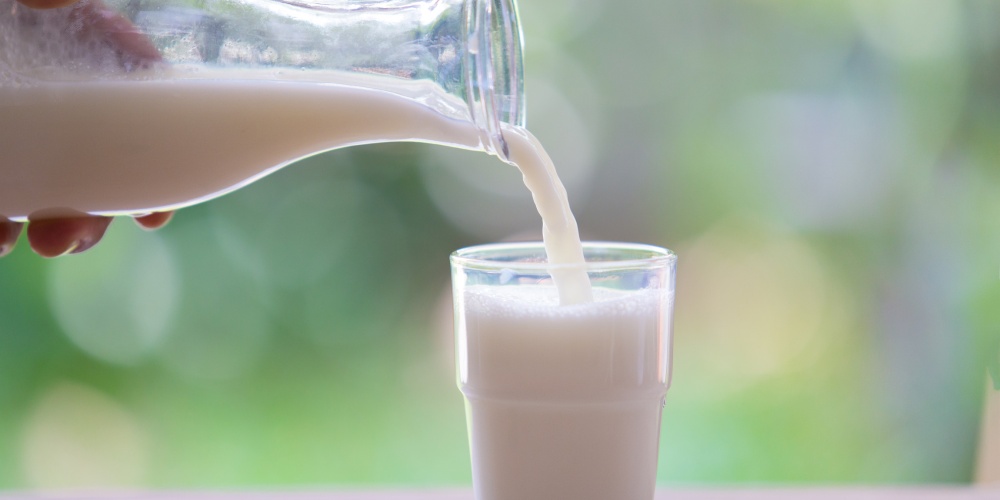
“Mar Ukva said: I am, with regard to this matter, like vinegar, son of wine, with respect to Father. Father, if he were to eat meat at this time, would not eat cheese until tomorrow at this time. But as for me, only at this meal, do I not eat cheese; at a different meal I will eat cheese” (Chulin 105a).
The prohibition of mixing meat and milk form part of the warp and woof of Judaism. Yet nowhere does the Torah explicitly forbid the mixing of meat and milk, let alone waiting—any amount of time—between the consumption of meat and milk.
“Do not cook a kid in its mother’s milk”. This prohibition, repeated three times in the Torah, is according to its simple meaning extremely limited in scope—and it would take great efforts for one to literally violate it today. Yet we do not read the Torah only according to its simple meaning. Our Sages understood the terms “kid”, “cook”, “mother” and “milk” much more expansively interpreting the Torah to be prohibiting not only cooking, but eating or even deriving benefit from any meat that was cooked[1] with any dairy product. The rabbis further extended the prohibition of meat to include fowl, concerned that one might accidentally confuse meat for fowl.
One might have argued that to extend the (rabbinic) prohibition of eating (uncooked) milk with meat, to waiting between the eating of meat and milk is an unwarranted, excessive stringency. And the Talmud, at least initially, understood that Rav Yochanan responded to Rav Yossi’s question as to how long one should wait between the eating of meat and milk with a curt “not at all”.
While the Gemara rejects that premise, arguing that only between milk and meat is there no obligation to wait, the Gemara never explains why that is so.
That is left to the medieval commentaries. Rashi (Chulin 105a s.v. asur) explains that the taste of the meat lingers in the mouth, while the Rambam (The Laws of Forbidden Foods 9:28) argues that pieces of meat remain between the teeth “for about six hours”.
Yet there is no prohibition to eat dairy just because the taste of meat lingers in one’s mouth, or even if there is meat caught between the teeth. Even eating (uncooked) meat and milk together is “only” rabbinically prohibited so that one might have argued that worrying about meat particles getting mixed in with milk would fall into the general category of a “fence around a fence[2]” and hence permitted.
The Tosafists (Chulin 105a s.v. leseudata) understand Mar Ukva's musings to mean that “immediately” after ending a meat meal—something indicated by benching and leaving the table—one may eat dairy. It is from this Tosafost that the custom, quoted by the RaMaH (Yoreh Deah, 89:1), of waiting one hour developed—a stringency as compared to the actual ruling of the Tosafists. The Tosafists clearly disagree with Rashi and the Rambam, with the waiting apparently more of a symbolic way of demonstrating that meat and milk do not mix.
Yet whether one hour, six hours, or something in between, the Jewish people the world over have accepted the minhag not to eat milk after meat. This practice reflects the deep religious feeling of the Jewish people.
The mixing of meat and milk was something the Jewish people wanted to avoid at all costs and the technical details of the law were of little interest to them. The general populace was unaware of many of the details of laws of kashrut and observed stringencies to ensure they not mistakenly break the law. Those who have learned the laws of kashrut well know that many of our most basic kitchen practices have little basis in Jewish law per se and much in the extra care Jewish women (and it was the Jewish woman who ruled in the kitchen) took to ensure the highest standards of kashrut such that even if mistakes would be made kashrut would be maintained.
A similar notion exists in one of the most important and impactful of all religious practices, that of waiting “seven clean days” before menstruating women immerse themselves in the mikva. It was “the daughters of Israel [who] were stringent upon themselves” (Niddah 66a), fearing that they may think they have the status of a Nidda (where 7 clean days are not needed) when in actual fact they fall under the category of a Zava and must according to Torah law wait seven days before going to mikva.
Yet not every practice is meant for all. Mar Ukva’s father waited a full 24 hours between meat and milk. But Mar Ukva waited only from meal to meal.
Why did Mar Ukva not follow the minhag of his father? Did he not agree with the verse, “Listen my child to the teachings of your father and the Torah of your mother” (Mishlei 1:8)?
Mar Ukva understood that while children must follow in the ways of their parents, mimicking them could prove catastrophic. No two people are alike and insisting that one copy everything from one's parents is foolish and counter-productive. No better example of this is that of Yitzchak, who copied his father to a tee. Heck, he even looked like him (see Rashi, Breisheet 25:19). But as he, when facing famine, departed for Egypt just as his father had done years earlier, G-d ordered him not to go. For Yitzchak, a trip to Egypt risked disaster. A worldly Avraham could travel to Egypt unaffected and unchanged (and return with even greater motivation to do good) but that same trip would likely have proved disastrous for his more sheltered son. Sometimes maintaining the ways of our fathers and mothers requires that we do the exact opposite.
Mar Ukva understood that he was not his father and to observe this stringency was not for him. Doing so ran the risk of distancing him from Judaism and the practices of his parents. Waiting a day may have worked for dad but not for son.
Maintaining tradition is crucial to the Jewish way of life. But it takes great wisdom by parents and children alike to recognize what must be maintained and what may and even should be discarded in order to maintain that very tradition[3]. To put it another way, the task of parents is to best assess which religious practices they should stress to their children and which at are better left for the children to decide on their own. And it is children we are talking about. Wait until adolescence and it is unlikely the parents will have much influence.
Getting this right can make all the difference in successfully passing down our heritage from one generation to another in spite of often radically different upbringings.
[1] It was this thrice written prohibition that led the rabbis to include eating and deriving benefit in the biblical prohibition. However, eating (and deriving benefit) remain prohibited biblically only if the meat and milk have been cooked together. Having a hamburger with a glass of milk or even putting some cheese on top of a cooked hamburger and eating it is “only” prohibited rabbincally.
[2] The Torah obligates us to put a fence around mitzvoth to ensure we do not accidentally violate them – similar to the fence around hydro wires to ensure we do not accidently electrocute ourselves. But just as the fence should not be too far from the wires, so too we may not then put up a protective fence, to protect the protective fence. Doing so runs the risk of violating the prohibition of adding to the Torah.
[3] A most relevant example is the establishment of the Day School movement, an idea that in Europe was vigorously fought (and that is an understatement) by those who saw the mixing of Torah and “secular” subjects as the worst form of sha’atnez. I shudder to think where World Jewry today would be without these dual curriculum schools.



